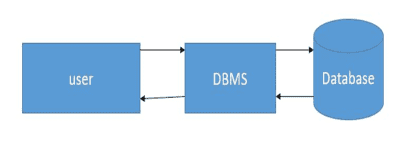File based system was used to manage information. It stored data in various files across different application programs to retrieve or add data to the appropriate file.

Direct Access Vs. Sequential Access
File processing could occur sequentially or through direct access.

However, this approach had limitations, necessitating the adoption of database management systems (DBMS).
Data duplication was a significant issue. Each program stored its separate files, resulting in redundant copies of the same data.
Data inconsistency was another challenge. When data was kept in different files, updating one item of data required changes in all relevant files. Failure to do so led to inconsistencies and potential errors.
Implementing data security measures was difficult and expensive. Data was stored in different files by different application programs, making organization-wide security procedures challenging to implement.
Shared File Approach
One solution to the problem of each application having its own set of files is to share files between different applications.

Shared files addressed the issues of duplication and inconsistent data across different versions of the same file held by different departments. However, they introduced other problems, including:
File incompatibility: When departments had their versions of files, each ensured that the file structure suited their specific application. Sharing files between departments could lead to compatibility issues, as the file structure suitable for one department might not suit another.
Difficulty controlling access: Some applications require access to more data than others. For example, a credit control application might need access to customer credit limit information, while a delivery note printing application only requires customer name and address details. However, the file still needed to contain additional information to support the application requiring it.
Physical data dependence: If the structure of a data file needed to be changed, all application programs using that data file had to reflect the alteration. This problem, known as physical data dependence, could lead to significant challenges in managing data consistency across applications.
Concurrent access problem: While a data file was being processed by one application, it was unavailable for others to access, leading to potential delays or conflicts in data access.
Limitation of Traditional File Processing System
- Data duplication
- Data inconsistency
- Difficult to implement data security
- File incompatibility
- Difficult to control access
- Physical data dependence
- Concurrent access problem
Difference between file based system and Database system
| Database Approach | File Based Approach |
| DBMS or Database Management System is a software application. It is used for accessing, creating, and managing databases. | A file system is a software that manages and organizes the files in a storage medium. It controls how data is stored and retrieved. |
| Programs and data in the database are independent. | Programs and data in the file system are interdependent. |
| Data can be retrieved and managed easily as it is stored in tables that are linked together. | Data can’t be retrieved and managed easily as it is stored separately in various files. |
| Data inconsistency is higher in the file system. | Data inconsistency is low in a database management system. |
| DBMS offers good protection mechanism. | Protecting a file system is very difficult. |
| DBMS provides a crash recovery mechanism | The file system doesn’t have a crash recovery mechanism. |
| DBMS system provides a concurrency facility. | These system doesn’t support concurrency. |
| The redundancy of data is low in the DBMS system. | The redundancy of data is greater. |
| We can easily query data in a database using the SQL language. | There is no efficient query processing in the file system. |
| DBMS system provides backup and recovery of data even if it is lost. | It doesn’t offer backup and recovery of data if it is lost |
Read Also: Introduction to Database


